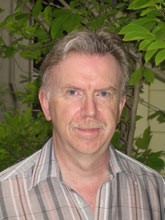

Friday - March 25, 2011
SLAC Today is
available online at:
http://today.slac.stanford.edu
In this issue:
From the Director of Particle Physics and Astrophysics: Program Priorities in Uncertain Times
Word of the Week: Étendue
 |
 |
|
Friday - March 25, 2011 |
From the Director of Particle Physics and Astrophysics: Program Priorities in Uncertain Times We are caught up in very uncertain times for federal science funding generally and for high-energy physics in particular. Currently SLAC is operating under a continuing resolution extending through April 8. As Persis reported in her column last week, there is reason to believe the FY2011 funding level for the Office of Science will be resolved before this expires. Given the overall fiscal situation, the Office of Science will then make decisions about where to apply the likely budget reductions, and issue guidance to laboratories and individual science programs about FY2011 funding levels. In the meantime, Particle Physics and Astrophysics division management, along with the rest of the laboratory, has been developing plans that will allow us to react to various possible funding outcomes. Some of these scenarios will be very challenging; all of them need to address both the short-term impacts of a FY2011 budget decision made more than halfway into the fiscal year and the longer-term implications for funding in subsequent years. Planning for the PPA program at any funding level is based on a set of priorities. Over the last three years, all the major elements of SLAC’s PPA program, along with those of the four other high energy physics laboratories, have been reviewed by external panels. These reviews were organized by the Office of High Energy Physics as a means of assessing and managing investments in the national program. The SLAC program emerged with strong grades in all cases, so clearly priority setting at this point means making choices among a portfolio of excellent existing and future opportunities. Word of the Week: ÉtendueWhile the Large Synoptic Survey Telescope will not be the largest optical telescope ever built, it will have the largest étendue. Étendue—French for "extent" or "scope"—is a combined measurement of the telescope’s mirror area and its field of view. This measurement is one indicator of how fast a telescope collects images of the universe. When we look up at the sky, we see what appears to be the inside of a globe—a curved surface speckled with points of light. This is the celestial sphere, and a telescope like the LSST will divide it up into measurable units, which are then known as the solid angle of the telescope—the area on the celestial sphere captured by LSST in one shot. Similarly, a star’s solid angle would be roughly the area it occupies on the celestial sphere. For each unit of the solid angle, a telescope can capture a certain number of photons (individual particles of light) in a certain amount of time. A larger mirror area will increase this rate of photon capture per unit area. A telescope’s field of view is simply the number of these solid angle pieces it can image at once. The étendue thus combines both the rate of photon capture in one unit of the solid angle and the number of solid angles per image. You can read more about the LSST in yesterday's SLAC Today. |
Events
Access
AnnouncementsLab AnnouncementsCommunity Bulletin BoardTrainingLab Training
Upcoming Workshops & Classes
News
|
|
| | ||
|
|
||
 <%
Response.AddHeader "Last-modified", getArticleDate()
'Response.AddHeader "Last-modified","Mon, 01 Sep 1997 01:03:33 GMT"
'Monday, December 06, 2010
%>
<%
Response.AddHeader "Last-modified", getArticleDate()
'Response.AddHeader "Last-modified","Mon, 01 Sep 1997 01:03:33 GMT"
'Monday, December 06, 2010
%>View online at http://today.slac.stanford.edu/. |
||